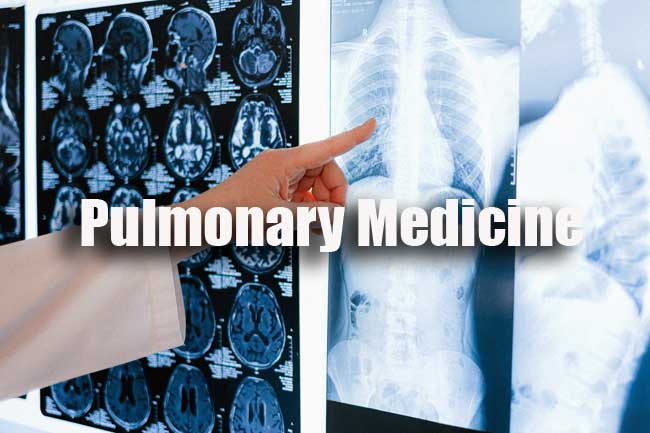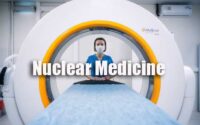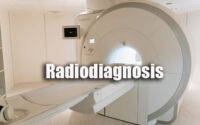Pulmonary Medicine Quiz
Pulmonary Medicine Quiz paper for the written examination is given below. Candidates who are looking for Pulmonary Medicine exam Quiz paper can find in this section. The applied candidates who are getting prepared for the Pulmonary Medicine can view this page for the Pulmonary Medicine Last Ten Years Quiz Papers.

Download the Pulmonary Medicine Quiz & Solutions & make it as a reference for your exam preparation. Take advantage of these Pulmonary Medicine Quiz Papers in a proper manner to get qualifying Marks. Last 5 years Pulmonary Medicine Quiz Papers provided here. Candidates who are applied for the above exam can check and download the Pulmonary Medicine Quiz Papers from here.
Quiz on Pulmonary Medicine
1. Which is the greatest risk factor for the progression of Latent Tuberculous Infection (LTBI) to active TB ?
(1) HIV infection
(2) Diabetes
(3) Silicosis
(4) Malnutrition
2. Which of the following medications interacts most frequently with protease inhibitors used to treat HIV infection?
(1) Ethambutol
(2) Rifampin
(3) Isoniazid
(4) Pyrazinamide
3. Which of the following HIV antiretroviral medications is preferable for use in a patient who is also taking rifampin 600 mg daily ?
(1) Lopinavir
(2) Atazanavir
(3) Efavirenz
(4) None of the above
4. The Immune Reconstitution Inflammatory Syndrome (IRIS) has been reported to occur in HIV-positive patients which of the following ?
(1) Disseminated tuberculosis
(2) Mycobacterium avium complex lymphadenitis
(3) Cryptococcal meningitis
(4) All of the above
5. Which is true about the TST (PPD) and Interferon Gamma Release Assays (IGRAs) ?
(1) TST and IGRAs (QFT-G, QFT-GIT, and T-Spot) should be used as aids in diagnosing infection with MTB
(2) IGRAs offer enhanced specificity in populations previously vaccinated with BCG
(3) A negative IGRA as well as negative TST may not be sufficient to exclude a diagnosis of MTB infection
(4) All of the above statements are true
6. In a patient with symptoms suggestive of asthma, chest radiographs may be useful to display
(1) Findings consistent with asthma, such as hyperinflation, peribronchial thickening, and mucoid impaction with atelectasis
(2) Findings suggestive of congenital malformations (e.g., a right aortic arch suggestive of a vascular ring)
(3) Evidence of airspace disease consistent with aspiration or cystic fibrosis
(4) All of the above
7. Which of the following is cause of variable extrathoracic airway obstruction ?
(1) Vocal cord polyps
(2) Paradoxical vocal cord motion
(3) Tracheomalacia of the intrathoracic airway
(4) Both (1) and (2)
8. Which of the following is a cause of variable intrathoracic airway obstruction ?
(1) Mediastinal adenopathy
(2) Paradoxical vocal cord motion
(3) Vocal cord polyps
(4) Foreign body
9. Which of the following is true about hypersensitivity pneumonitis ?
(1) A low CD4 to CD8 ration is typically found in a bronchoalveolar lavage
(2) A high CD4 to CD8 ration is typically found in bronchoalveolar lavage
(3) Oral steroids are not typically used from a treatment standpoint
(4) Antifungal agents are first-line therapy in patients with hypersensitivity pneumonitis
10. Mechanisms for the association of gastroesophageal reflux disease and asthma include :
(1) Aspiration of gastric contents into the lung with consequent bronchospasm
(2) Reflux-induced activation of a vagovagal reflex arc from the esophagus to the lung causing bronchoconstriction
(3) A side effect of proton pump inhibitors
(4) Both (1) and (2)
11. A 65 year old male with COPD has an FEV, of 28% predicted, in addition to the spirometry data, the recently described BODE score provides useful survival prediction data in this type of patient. What additional data are required to calculate the BODE score ?
(1) PaO2, PaCO2, and 6-min walk test (6MWD)
(2) Arterial pH, dyspnea score, and 6MWD
(3) Dyspnea score, body mass index (BMI), and 6MWD
(4) Arterial pH, BMI, and residual volume
12. The gold standard for the diagnosis of pulmonary hypertension is :
(1) Echocardiography
(2) Physical exam
(3) Right heart catheterization
(4) Pulmonary angiogram
13. The following therapy (ies) should be considered in all patients with pulmonary hypertension regardless of the cause :
(1) Oxygen
(2) Diuretics
(3) Anticoagulation
(4) All of the above
14. Which of the following is not a major risk factor for venous thromboembolism ?
(1) Recent major abdominal surgery
(2) Postpartum state
(3) Recent fall
(4) Malignancy
15. The two most helpful diagnosis test in the evaluation of pulmonary embolism are :
(1) CT chest arteriography and 2D echocardiography
(2) Pulmonary arteriogram and venous ultrasonography
(3) Ventilation-perfusion scan and venous ultrasonography
(4) D-dimer and CT chest arteriography
16. Plasma exchange therapy should be considered in which of the following scenarios :
(1) Wegener Granulomatosis with rapidly progressive glomerulonephritis
(2) Microscopic polyangitis with diffuse alveolar hemorrhage
(3) Anti-GBM antibody disease, Goodpasture syndrome
(4) All of the above
17. Granulomas may be seen on pathologic biopsy specimens in all of the following, EXCEPT :
(1) Wegener granulomatosis
(2) Microscopic polyangiitis
(3) Drug-induced lung toxicity
(4) Churg-Strauss
18. Patients that present with symptoms of DPLD at age less than 40 years are likely to be any of the following EXCEPT :
(1) Pulmonary Langerhans cell histiocytosis
(2) Sarcoidosis
(3) Lymphangioleimyomatosis
(4) Pneumoconiosis
19. Which of the following does not have a familial component ?
(1) Tuberous sclerosis
(2) Gaucher’s disease
(3) Sarcoidosis
(4) Acute eosinophilic pneumonia
20. Sarcoidosis is associated with all of the following, EXCEPT :
(1) Extra pulmonary manifestations
(2) Lymphadenopathy
(3) Clubbing
(4) Diffuse parenchymal infiltrates
| Practice Set | MCQs |
| Quiz | Questions and Answers |
21. Typical presentation for idiopathic pulmonary fibrosis is :
(1) Men less than 40 years of age with a subacute or chronic onset
(2) Men over 40 years of age with an acute or subacute onset
(3) Men less than 40 years of age with a subacute or chronic onset
(4) Men over 40 years of age with a subacute or chronic onset
22. Which of the following is not considered an idiopathic cause of DPLD ?
(1) Idiopathic pulmonary fibrosis
(2) Hypersensitivity pneumonitis
(3) Tuberous sclerosis
(4) Amyloidosis
23. Which of the following warrants treatment in patient of sarcoidosis ?
(1) Asymptomatic patient with hilar adenopathy (Stage I)
(2) Patient with bilateral hilar adenopathy and infiltration (Stage II) and symptoms (cough, dyspnea, chest pain, and effort intolerance)
(3) Patient with Stage II who is asymptomatic and have only mild lung function impairment
(4) Patient with Stage II who are asymptomatic with severe lung function
24. Which of the following organism is a usual cause of granuloma formation ?
(1) Leishmania
(2) Cryptococcus neoformans
(3) Mycobacterium tuberculosis
(4) All of the above
25. All of the statements regarding Sarcoidosis is true EXCEPT :
(1) Sarcoidosis is a common, multi system granulomatous disease of unknown cause
(2) There is no absolute cure in Sarcoidosis
(3) Uveitis is uncommon in Sarcoidosis
(4) Erythema nodosum is common in Sarcoidosis
26. Which of the statement regarding sarcoidosis is correct ?
(1) Overall CNS involvement may be seen in 30% of the patients with Sarcoidosis
(2) Eye involvement in Sarcoidosis is upto 2%
(3) Stage IV disease with extensive fibrosis and bullae formation are good responder to corticosteroids
(4) Hilar adenopathy is unilateral in Tuberculosis and bilateral in Sarcoidosis
27. Which one of the following is not a rapid grower ?
(1) M. Avium complex
(2) M. Fortuitum
(3) M. Chelonae
(4) M. Abscessus
28. Which aminoglycoside is preferred in patients with Nocardia ?
(1) Tobramycin
(2) Amikacin
(3) Gentamicin
(4) Kanamycin
29. A patient with blood chemistry of pH 7.3, CO2 of 60 and HCO3 of 28 mEq/dl are indicative of :
(1) Partially compensated respiratory acidosis
(2) Uncompensated respiratory acidosis
(3) Fully compensated respiratory alkalosis
(4) Metabolic alkalosis with respiratory alkalosis
30. Following pulmonary changes are seen in restrictive lung disease EXCEPT :
(1) ↑ FEVI/FVC
(2) ↓TLC
(3) ↓RV
(4) ↑VC
31. All are decreased in infiltrative lung disease, EXCEPT :
(1) Vital capacity
(2) Alveolar arterial difference in PaO2
(3) Total Lung capacity
(4) Lung compliance
32. Alveolar hypoventilation is observed in :
(1) Gillian-Barre syndrome
(2) Acute asthma
(3) Bronchiectasis
(4) CREST syndrome
33. Which one of the following values is not a feature of Acute severe asthma ?
(1) Pulsus Paradoxus
(2) PaO2 of less than 8 kPa
(3) Heart rate of more than 110/min
(4) PEF of 60 to 70% of expected
34. The following are main diagnostic criteria for allergic bronchopulmonary aspergillosis EXCEPT :
(1) Distal bronchiectasis
(2) Peripheral eosinophilia
(3) Bronchial asthma
(4) Pulmonary infiltrates
35. All are true about Aspirin sensitive asthma EXCEPT :
(1) Nasal polyposis
(2) Treatment with inhaled corticosteroids
(3) Rhinosinusitis
(4) Increased prostaglandins
36. Central bronchiectasis is seen with
(1) Cystic adenomatoid malformation
(2) Cystic fibrosis
(3) Broncho carcinoma
(4) Tuberculosis
37. ABPA complicates :
(1) Cystic fibrosis
(2) TB cavity
(3) Bronchiectasis
(4) Pneumoconiosis
38. In bronchial asthma following pulmonary function abnormalities are present EXCEPT :
(1) Decreased FEV1
(2) Decreased maximum expiratory flow rate
(3) Increased residual volume
(4) Increased inspiratory capacity
39. Consider the following statements
The features of severe asthma include
(A) Central cyanosis
(B) Disturbance of consciousness
(C) Pulsus paradoxus
(D) Heart rate less than 60/minute
Which of these statements are correct ?
(1) (B), (C) and (D)
(2) (A), (C) and (D)
(3) (A), (B) and (C)
(4) (A), (B) and (D)
40. All of the following diseases are associated with peripheral blood eosinophilia EXCEPT :
(1) Allergic Bronchopulmonary Aspergillus (ABPA)
(2) Loeffer’s Syndrome
(3) Pulmonary eosinophilic granuloma
(4) Churg-Strauss syndrome
41. Commonly used route of administration of omalizumab in asthma is :
(1) Subcutaneous
(2) Inhalational
(3) Intradermal
(4) Intramuscular
42. Bronchial asthma patient on artificial ventilation requires :
(1) A low inspiratory flow
(2) An equal IE ratio of 1:1
(3) An inverse ration ventilation
(4) An IE ratio 1:2:5
43. Central bronchiectasis is seen with
(1) Cystic Adenomatoid Malformation
(2) Cystic fibrosis
(3) Broncho carcinoma
(4) Tuberculosis
44. Emphysema presents with all EXCEPT :
(1) Cyanosis
(2) Barrel shaped chest
(3) Associated with smoking
(4) Type I respiratory failure
45. The drug varenicline is used in :
(1) Pulmonary Hemosiderosis
(2) Sleep apnoea
(3) Anti-trypsin deficiency
(4) Nicotine dependence



